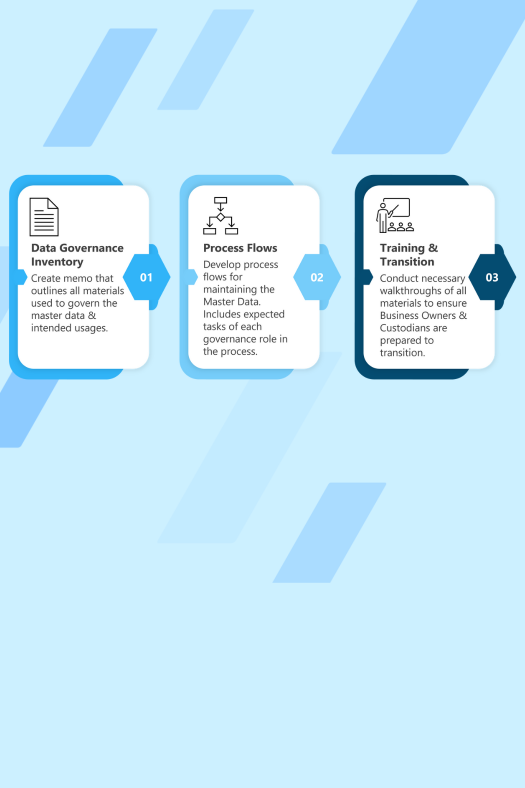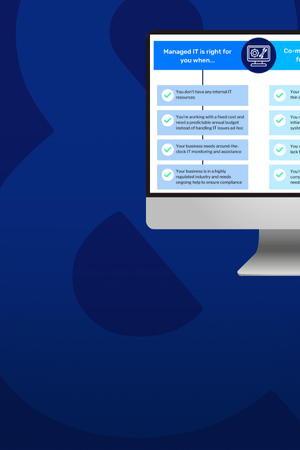Authored by Harris Gofstein, Director | Oracle EPM Implementation Services
Table of Contents:
- What Are the Major ERP Challenges Today?
- Why Transitioning Your ERP To the Cloud Is Critical
- Your Cloud Enterprise Resource Planning Assessment
- 4 Steps for a Seamless Oracle ERP Cloud Transition
- Closing Thoughts: The Future of Cloud ERP Is Now
Let’s face it—Enterprise Resource Planning (ERP) has reached a tipping point. The world is moving faster, and the financial systems you built and heavily customized years ago can’t keep up.
If you want your organization to succeed in today’s fast-paced environment, you need an ERP that drives business processes. Your ERP should be capable of providing key insights, accurate reporting, and real-time analytics that allow you to identify and adapt quickly to evolving market challenges and customer needs. This level of flexibility and adaptability at the scale you need only exists in a modern cloud ERP.
While a cloud-based ERP can make business operations substantially easier, the actual transition from on-prem to cloud is quite difficult. The process takes time and money and involves a lot of strategy, governance, and planning. With the right resources and experts on your side, it can be done successfully.
What Are the Major ERP Challenges Today?
Many organizations have ERP systems that are decades old and custom-built. This makes the idea of replacing them feel arduous. But doing so is necessary to support growth, scale operations, and create a competitive advantage.
So, the sooner you accept that your antiquated ERP is holding you back, the sooner you can start planning for a cloud transition.
The top four challenges we hear from our clients with outdated ERP systems are:
- Reliance on highly manual processes
- Outdated reporting and analytics
- Non-value-adding IT upgrades
- Complex security and compliance requirements
These aren’t small issues. Manual processes and workarounds are a result of heavy customizations and outdated user interfaces (UX). These lead to inefficient processes and rework. Outdated reporting tools that are not directly connected to data sources, and are dependent on scheduled refresh cycles, lead to multiple versions of the truth and costly mistakes. Technical upgrades are time-consuming and expensive while providing zero business benefits. Furthermore, an antiquated ERP system leaves you vulnerable to cyberattacks and data breaches, putting your entire organization at risk.
So, how do you address the above challenges and set your organization up for long-term success?
Why Transitioning Your ERP To the Cloud Is Critical
Moving your ERP to the cloud is the answer. Thanks to platforms like Oracle Cloud ERP, the cloud can scale and securely serve global organizations—and the sooner you start the transition process, the better.
Our team at SC&H specializes in helping organizations transition to the best-in-class Oracle Cloud ERP, providing a holistic view of the business and accurate data needed for long-term, strategic growth.
Research shows that transitioning to cloud ERP can provide significant value and return on investment (ROI) for your organization. This often includes but is not limited to:
- Cost reduction: According to a study by Nucleus Research, Oracle Cloud ERP delivers, on average, 4x the ROI of on-premises ERP implementations.
- Increased accessibility: Remote access to the cloud and the ability to quickly scale resources allows teams to work more efficiently and adapt to change faster.
- Improved collaboration: A cloud-based ERP provides on-demand access to the system, enabling real-time collaboration and offering intuitive interfaces that enhance usability and productivity.
- Gained efficiency through automation: Cloud-based ERP systems offer robust automation capabilities to eliminate tedious manual tasks.
- Improved data security: Research from Cloud Security Alliance highlighted that 85% of organizations have improved their overall data security posture after moving to the cloud.
These gains are further amplified for organizations that require scalability as they acquire new businesses and/or navigate regulatory events such as completing an Initial Public Offering (IPO).
Your Cloud Enterprise Resource Planning Assessment
Before you begin your transition to cloud ERP, it’s critical to take a step back and assess your current state of operations. This will help you understand how much work is needed so you can create a successful transition plan.
Below are the six questions to ask during your internal ERP assessment:
- What is your existing financial systems strategy?
- What are your manual, high-risk business and reporting processes?
- What is the level of customization across your current-state ERP?
- When is your next planned ERP upgrade cycle?
- What business benefits are expected from your next upgrade?
- What cloud ERP options have you started assessing?
These questions will help your team gauge the current state of its ERP and help lay the foundation for a cloud ERP roadmap to enable a more seamless transition.
4 Steps for Enabling a Seamless Oracle ERP Cloud Transition
Once you’ve done an internal assessment, it’s time to put a plan in place to transition to cloud ERP. That plan should align with your current and long-term business objectives. And yet, according to an ERP report by Gartner, nearly 70% of organizations had an ERP strategy that was not well aligned to their business strategy (less than or equal to 75% alignment).
Below are SC&H’s 4 steps for enabling a seamless Oracle ERP cloud transition aligned with long-term business outcomes:
- Planning and Strategy: You need to first define clear objectives, goals, and guiding principles to keep you on track during the transition process. Our team can serve as an extension of yours to develop a comprehensive plan to streamline implementation across the business, including technical requirements, architecture, integrations, program management, and more.
- Solutions Review and Procurement: Once you have your roadmap in place, it’s time to select your cloud ERP. We will help you evaluate ERP software options based on your unique business needs. This process involves developing a request for proposal (RFP), conducting system selection, and supporting contraction negotiations.
- Implementation Support: We won’t sugar coat it, implementing an ERP is a lengthy, complex process. But with the right Oracle Cloud ERP implementation partner on your side, it’s very manageable. We work with your team on every phase of implementation and ensure your operational and financial processes are aligned. The end results? Seamlessly implemented business processes with the reporting and analytics required to drive data-driven decisions and achieve key business goals.
- Rollout and Deployment: Once your ERP is up and running, the job isn’t complete. Now it’s time to make sure everything’s working the way it should. Our team works hand-in-hand with you to test, validate, and train team members on your new ERP system so that you can feel confident you have the skills needed to succeed.
The Future of Cloud ERP Is Now
Today, over 60% of organizations have moved from on-prem ERP to a cloud-based ERP, with the count continually rising. The transition is no longer an “if” but a “when.” Since it’s a lengthy process, now is the time to hit the ground running and adopt a proactive approach to ERP success.
And that success absolutely requires an experienced partner. Our team at SC&H has helped hundreds of organizations optimize their ERP investments and successfully transition to the cloud, and we’re ready to help you.





